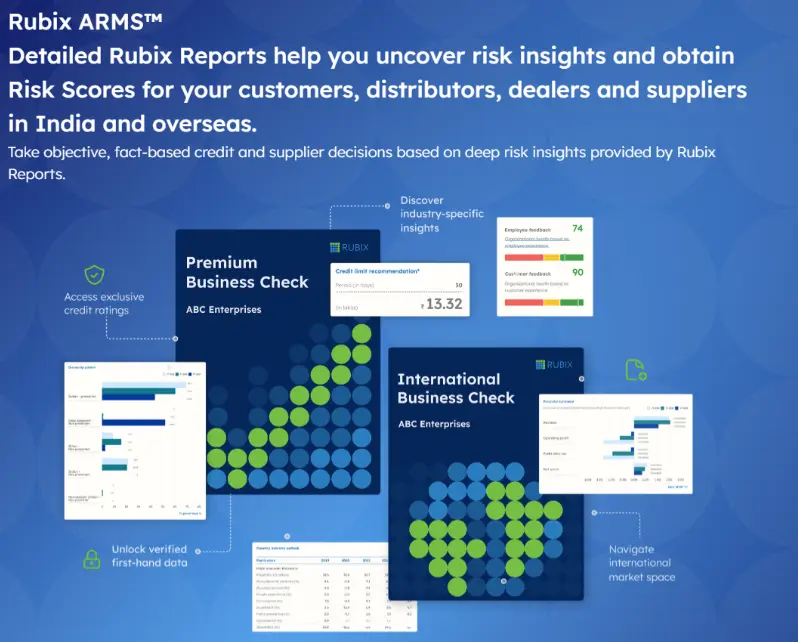CFO Mindset and Strategies
From Risk to Resilience: How Businesses Can Stay Afloat with Data-Driven Financial Tools

Leveraging Supply Chain Finance, Credit Insurance, and Data Analytics to Convert Risk into Competitive Advantage
The global economic landscape in 2025 is being shaped not just by market forces but by mounting geopolitical pressures. Since April, the United States has enacted a sweeping wave of tariffs, the highest in a century. China’s retaliation with 125% levies on US goods and the broader uncertainty triggered by the 90-day tariff pause for all countries except China have sent tremors across supply chains. For Indian exporters alone, these policies threaten a potential $5.76 billion decline in exports to the US, India’s largest trade partner. If you are navigating global supply chains, these shifts are already hitting your margins, timelines, and cash flow. You will now need to rethink how to finance trade, manage working capital, and protect supply chain continuity.
Here’s the reality: market volatility isn’t going anywhere. But you can manage the risk and even turn it into an advantage with the right tools.
Liquidity as the First Line of Defence
The imposition of tariffs and the race to front-load shipments before deadlines have strained freight capacity and spiked logistics costs. As cash flow cycles tighten, maintaining liquidity has become the top priority for exporters and importers alike. This is where SCF steps in, not just as a financial tool, but as a strategic enabler.
SCF enables you as a buyer to extend payment terms while giving your suppliers early access to funds through third-party financing. This flexibility is vital when your import costs are rising and supply chains are shifting rapidly. Whether it is factoring, reverse factoring, inventory finance, or dynamic discounting, SCF gives you the breathing room you need to operate under pressure. Platforms like Vayana, which power digital SCF programs for corporates and MSMEs, are critical enablers in this shift, providing multi-funder access, integrating with compliance systems like GST and e-invoicing, and using analytics to drive smarter, faster credit decisions.
As noted in a WTO research, a 10% increase in the use of international factoring—the most common form of SCF among SMEs—can boost a country’s trade by 1%. This underscores how access to trade-linked liquidity directly supports global commerce and economic resilience.
Building Financial Buffers Across the Chain
Tariff increases have exposed deep vulnerabilities in global supply networks, especially for smaller suppliers operating on thin margins. Deep-Tier Supply Chain Finance (DTSCF), a fast-growing innovation, allows corporate anchors to leverage their creditworthiness across their supply chain, including tier 2, 3, and 4 suppliers. Enabled by blockchain and smart contracts, this model ensures that even the most remote contributors in a supply chain can access low-cost credit, improving transparency and reducing systemic risk.
A buyer like a leading automotive OEM can ensure uninterrupted production by guaranteeing early payments to the smallest component manufacturers in their ecosystem. DTSCF programs provide adequate liquidity that enables these suppliers to continue production while avoiding costly short-term loans.
Data, Analytics, and the Visibility Imperative
In this volatile and risky environment, information is power. Rubix Data Sciences, with its credit decisioning and early warning system platform, Rubix ARMS+EWS equips businesses with real-time analytics, counterparty risk scores, and sectoral insights that allow for proactive risk management. This is especially critical because trade shifts force businesses to work with new suppliers, distributors, and customers in other countries, leading to an elevation of supplier & credit risks. Corroborating this is the fact that for the period from Jan – March 2025 (even before the tariff war formally kicked-off), large US Companies filed for bankruptcy at the fastest rate in 15 years.
Analytics also enable scenario planning, helping businesses model the impact of tariff changes on demand, pricing, and supply routes. Armed with data, businesses can make smarter decisions on which markets to prioritize, where to reallocate inventory, and how to arrange supply chain finance to see them through this volatile period.
Trade Credit Insurance: Mitigating Risk While Expanding Reach
Tariffs not only increase costs but also delay payments, raise buyer insolvency risks, and lengthen cash cycles. Trade credit insurance mitigates these risks by protecting against non-payment. It empowers businesses to extend credit safely, maintain cash flow certainty, and enter new markets with confidence—even when traditional underwriting models falter under geopolitical stress.
In fact, as global trade adjusts, trade credit insurance has become essential to enabling sales continuity for exporters, especially in high-risk or emerging markets. In its latest Export Credit Business Confidence Trends Index, the Berne Union industry association reveals that credit and political risk insurers are anticipating a sharp rise in demand for short-term policies, along with an increase in claims—a reflection of growing uncertainty in global trade. This underscores the critical role of credit insurance in de-risking receivables, especially when dealing with unfamiliar counterparties or volatile markets.
Sustainability and Supplier Collaboration
As tariffs drive firms to diversify sourcing, there is a growing need to partner with suppliers, not just transact with them. SCF enables this collaboration by offering early payment benefits, which strengthen relationships and build loyalty. In return, buyers become “preferred customers”, a major advantage in constrained supply environments.
The Indian Advantage: Acting During the Tariff Reprieve
India has a strategic window of opportunity. Compared to China and Vietnam, Indian goods will face significantly lower tariff hikes from the US after the 90-day reprieve (provided no trade deals are struck by then); just 26% on average, with exemptions for critical sectors like pharma. During the 90-day pause, Indian exporters have a chance to recalibrate strategies, diversify markets, and optimize cash flows using smart finance tools.
Platforms like Vayana TradeXchange and TReDS are helping MSMEs access much-needed working capital by digitizing and simplifying the supply chain finance process. By bridging the substantial ₹20–25 lakh crore credit gap, these platforms are enabling businesses to stay competitive and resilient amid global headwinds.
Resilience is the New Competitive Advantage
From shipping delays and cost escalations to the reconfiguration of supply networks, businesses in 2025 face one undeniable truth: the rules of global trade are being rewritten.
Those that adapt swiftly, using data-driven, tech-enabled financial strategies, will not just survive, but lead. SCF, trade credit insurance, and analytics are no longer support functions. They are strategic imperatives.
With partners like Vayana and Rubix Data Sciences, businesses can turn tariff turbulence into opportunity, ensuring liquidity, protecting relationships, and building resilient, agile supply chains for the long haul.







